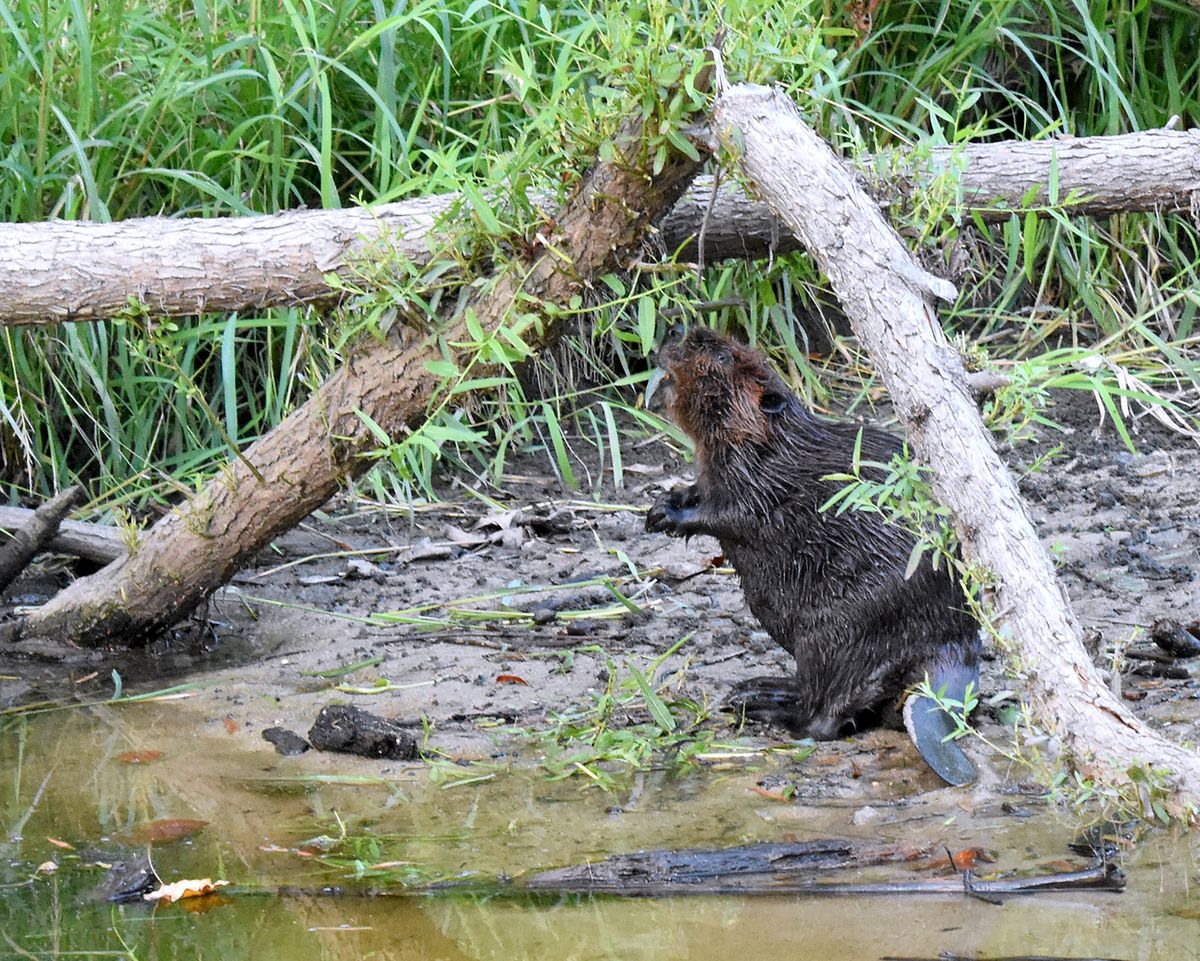Finding ways to share suburbs with ‘nature’s engineers’ the beavers

Throughout the country, suburban areas such as Greenbelt, Maryland, and Arlington, Virginia, have wetlands, lakes and streams that were created or reshaped by large brown, flat-tailed and orange-toothed rodents.
Beavers, like humans, change their surroundings to fit their needs. Known as nature’s engineers, they topple trees to build lodges to live in and dams to raise water levels for protection from predators. Dams also slow water’s flow while filtering sediment and pollutants that would otherwise flow downstream. The resulting wetlands often attract wildlife diversity where none had existed.
There are challenges, though. Beaver dams sometimes cause flooding, and most people prefer trees alive and upright. Communities face a delicate balancing act learning to coexist with beavers.
In late 2019, many people enjoying Washington & Old Dominion trail near Glencarlyn Park in Arlington became beaver fans as one furry family transformed Sparrow Pond – a sediment-filled, manmade stormwater management area – into an oasis for muskrats, birds, frogs, turtles and deer.
“As a local government, it’s our job to find a good balance between protecting the W&OD trail and the beavers,” said Lily Whitesell of the county’s environmental services department.
In April, the county installed a “beaver baffle” – a pond leveler. Beavers often rush to plug leaks in their dams. Baffles stabilize water levels by creating a hidden exit for high water to escape through the dam, unnoticed by the beavers.
Beavers inhabit Greenbelt’s Buddy Attick Lake Park. Visitors love seeing them but also love the park’s mature trees. Recently, Eagle Scout Andrew Jones, 18, organized a tree-caging event – putting wire mesh around large tree trunks to protect them while conserving beaver habitats.
“About 20 volunteers caged 60 trees to discourage beavers from gnawing them and overeating,” Jones said. “It also protects people from injury due to random trees falling.”
“We cover the trees we don’t want them to eat while providing others they like,” said Luisa Robles, Greenbelt’s sustainability specialist. Some new trees are periodically planted just for the beavers.
“We need to learn to yield a little of our wants to share the Earth’s resources,” she said.
When water levels or food sources decrease, beavers move on. At Sparrow Pond, summer rains caused more sediment to flow in while the baffle prevented water from rising. Beavers weren’t seen for weeks. Saffiya Khan, 8, whose family periodically visits the pond to watch wildlife, said, “If the beavers are gone, I’ll really be sad.”
Heavy rains in late September brought good news for Saffiya. A beaver returned doing what beavers do: checking out the dam for any needed repairs. Sparrow Pond’s 2023 restoration project will improve sediment management, restore proper water depth and improve wildlife habitat without creating problems for the trail.
“A beaver baffle will also be included so beaver families can make the pond their home in the future,” the project’s flier said. The balancing act continues. Watch beavers build a dam in a video clip from “Leave It to Beavers” on PBS at wapo.st/nature.